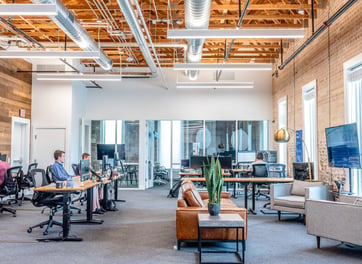Jobs After-Sales: 13 Common Career Changes For Salespeople in 2025
In this article, we explore the most common career paths sales people take throughout their lives and the changes that s...

In this article, we explore the most common career paths sales people take throughout their lives and the changes that s...
![How to Use the Email Opt-Out Field in Salesforce [Step-by-step Guide]](https://www.cirrusinsight.com/hs-fs/hubfs/Imported_Blog_Media/email-opt-out.jpg?width=362&name=email-opt-out.jpg)
Learn how to set up and use the Email Opt-Out field in Salesforce to manage email preferences, stay compliant, and sync ...

Master essential Salesforce admin skills employers want. Learn how to improve, apply, and showcase them with examples, r...
As a Salesforce administrator, you’re likely familiar with the frustration of your preferred “build vs. buy” solution not being approved. Maybe your organization doesn’t have the budget to buy, so a quicker, easier fix is needed.
There’s no one right answer to build or buy. That’s why understanding your organization’s needs is important, so you can continue to learn and grow with your team.
“Even in the same scenario, we might pick different paths and sometimes be right and wrong,” says Host Kristi Campbell, Senior Salesforce Admin & Salesforce MVP.
Part of that means thinking outside the box. Try investing in solutions for yourself rather than just for the customer, or building semi-automated custom solutions that can continue to improve over time.
In episode three of Serious Insights for Salesforce Admins, we dig deeper into the “build vs. buy” debate with Emilie Jensen, who at the time of the recording was the Sales Operations Director at Infrascale.
Listen to this episode to learn:
##
Do you remember to invest in yourself? As a Salesforce administrator, solutions that might make your own life easier may seem hard to justify. But they can be life-changing, says Emilie Jensen, who at the time of the recording was the Sales Operations Director at Infrascale.
In part two of our “build vs. buy” conversation, Host Kristi Campbell, Senior Salesforce Admin & Salesforce MVP, is joined again by Emilie as they dig deeper into the weeds of the build or buy debate.
“Sometimes it feels harder to make arguments for things that aren't customer-facing or time-optimized … [it] doesn't feel like the thing you would make time for against those user things, but it's equally — if not more — important,” Kristi says.
But is there really one solution or correct answer to the question of whether to build or to buy? What factors should you consider when drawing up a proposal, and what should you do if management settles on a solution that you weren’t actually rooting for? Do the pros of semi-automated solutions outweigh the cons?
We walk through these questions and more on episode three of Serious Insights for Admins. Don’t forget to listen until the end for tips and resource recommendations from Kristi and Emilie!
##
Building a semi-automated solution can be a quick fix, but also a challenge.
Sometimes a partially-automated solution that you’ve built yourself is enough to kickstart the transition process from an old system to a new one. It may not be the final product — there may be more features you want to add in the long run — but your team has everything they need. Then, they can provide you with questions and suggestions until you reach the best possible custom solution together.
The challenge, though, can lie in the ongoing development. “How [to] get people to articulate that information correctly, I think is the next big step for most admins,” Emilie says.
Invest in yourself.
It can be difficult to make a “build vs. buy” argument for solutions or products that benefit admins rather than users. But they can be just as, if not more, important — and can make an admin’s life a lot easier.
For example, a few years ago, Emilie took a Salesforce Accelerator coaching session on data hygiene, which enabled her and other users to become data stewards. “It changed my life. That was so great,” she said. “Starting with a data stewardship perspective, when you're thinking on a build versus buy conversation, can really help simplify a lot of the decision making.”
‘Build vs buy’ does not have one correct answer.
The debate over whether to build or buy your solution isn’t about landing at the “correct” answer — it’s about landing at the solution that works best for you and your organization at the moment. There are a lot of factors that go into that decision, from pricing and available resources to billing and vendor evaluation.
“Even in the same scenario, we might pick different paths and sometimes be right and wrong,” Kristi says.
##
💥 What she does: Salesforce Administrator at CashApp and former Sales Operations Director at Infrascale
💻 CashApp on the web: Twitter | LinkedIn
💻 Infrascale on the web: Twitter | LinkedIn
🔗 Emilie on the web: LinkedIn | Trailblazer
🧠 Emilie’s big idea: “Starting with a data stewardship perspective, when you're thinking about a build versus buy conversation, can really help simplify a lot of the decision making.”
##
Key excerpts from the episode transcript
[4:54] Emilie: “Sometimes I would spec out options we could buy and then I would feel like I could just build this in the same amount of time with the same result. And I don't have to present options to the CFO. I can just be like, I'm just gonna build it. And they'll be like, great, cost savings, whatever, wash my hands of it, and then I get the solution that I wanted without having the fear of them not selecting the one that I wanted.”
[15:41] Emilie: “I took an accelerator on data hygiene and it changed my life. That was so great because what it really helped me do was enable myself and other users to be data stewards. Starting with a data stewardship perspective, when you're thinking about a build versus buy conversation, can really help simplify a lot of the decision making. Thinking about, where's this custom field going to be used eventually? Is this solution significant to a just-for-now problem? Or is this significant for a long-term business problem? Getting users to define scope is so important in a timeline type of perspective, versus just a what's the problem I want to solve perspective.”
[23:00] Kristi: “What I like about this conversation is that there are no right answers. Even in the same scenario, we might pick different paths and sometimes be right and wrong.”
[28:00] Emilie: “I already knew you don't want to hard code IDs into your automations. But this article from Jen W. Lee on her Salesforce blog just gives such a good summary explanation around why. You could kind of figure out for yourself why, but not only does she give you the why, she gives you, what are your alternatives? Because sometimes you just don't want to do a look-up to find the correct record type. You just don't. You want to just put that record type ID in there, you want to put that user ID in there, and then deal with the repercussions when the user gets deprecated or when the record type gets deprecated.”
[29:50] Kristi: “[My recommendation] is a Medium article by Gordon Lee about when people are getting started, the idea of, go volunteer at a nonprofit is a common thing people say. [...] Don't do that. [...] because even if you do work at a nonprofit, you might leave them some spaghetti that they're gonna have to deal with after you're gone. But you can't necessarily promote the things about those projects in the same way as you could something that you own.”
[14:11] Kristi: “I also like the idea of considerations of things to build or buy for yourself, which I think can feel like a different argument […] but I think sometimes it feels harder to make arguments for things that aren't customer-facing or time-optimized […] but it's equally, if not more, important.”
[20:56] Emilie: “[Having a philosophy or architecture] helps somebody who's just getting into the system to quote something. What you're looking at, as far as your partner custom object goes, you're giving some guidelines on how the sales process works. And I think that defining where you're going to put that, whether it's a custom object or an approval process, is definitely part of your admin journey.”
[23:00] Kristi: “What I like about this conversation is that there are no right answers. Even in the same scenario, we might pick different paths and sometimes be right and wrong. It just is about an awareness of understanding if you have the budget to buy something [and] even if you do, evaluating vendors, which I think is a whole separate conversation.”